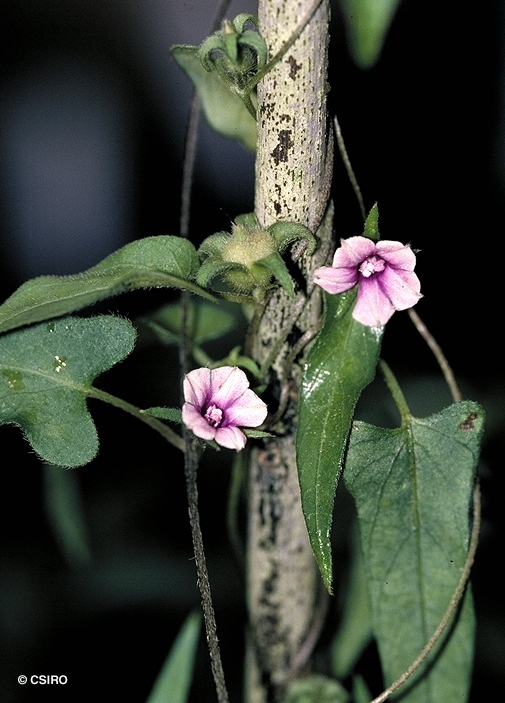Australian Tropical Rainforest Plants - Online edition
Ipomoea eriocarpa R.Br.




Brown, R. (1810) Prodromus Florae Novae Hollandiae : 484. Type: Endeavour River?, Banks & Solander; (BM?).
Morning Glory
A slender vine not exceeding a stem diameter of 2 cm.
Flowers almost sessile or on pedicels up to 3 mm long. Flowers about 9-10 mm diam, corolla mauve except for a darker centre. Sepals about 5-8 mm long, apices acuminate, outer surface hairy. Corolla tube about 10 mm long. Anthers about 1 mm long, staminal filaments about 4-5 mm long. Ovary about 3-3.5 x 3 mm, surrounded by hairs. Style hairy. Stigma 2-lobed, hairy.
Fruits about 5-7 mm diam., hairy, sepals persistent at the base. Seeds about 3-5 x 3 mm. Embryo green. Cotyledons folded and rolled in a complex fashion. Radicle straight, about 1-2 mm long.
Cotyledons bilobed, about 19-21 x 18 mm, glabrous throughout. Petiole hairy, about 10 mm long. First pair of leaves lanceolate to narrowly cordate, about 25-35 x 14-20 mm, upper and lower leaf blade surfaces clothed in hairs. At the tenth leaf stage: leaf blade narrowly cordate, apex acuminate, upper and lower surfaces clothed in hairs. Midrib raised on the upper surface. Petiole hairy. Stem densely clothed in prostrate hairs. Seed germination time 28 days.
Occurs in WA, NT, CYP, NEQ and CEQ. Altitudinal range from near sea level to about 600 m. Usually grows in open forest but probably also found in vine thicket and monsoon forest. Also occurs in Africa, Madagascar, Asia and Malesia.





